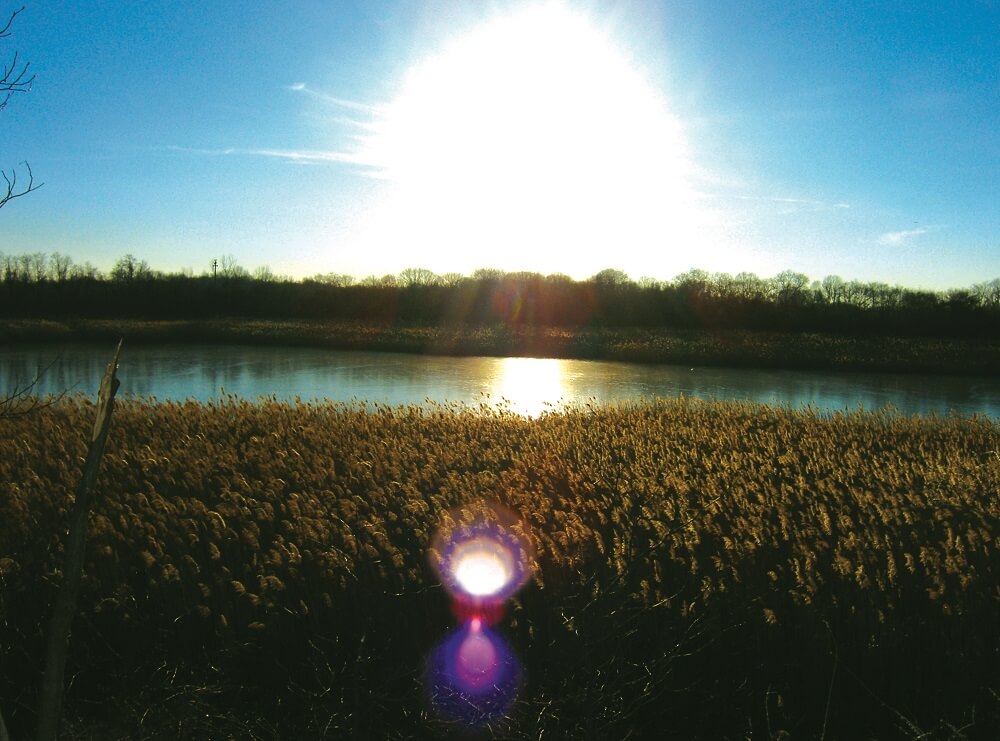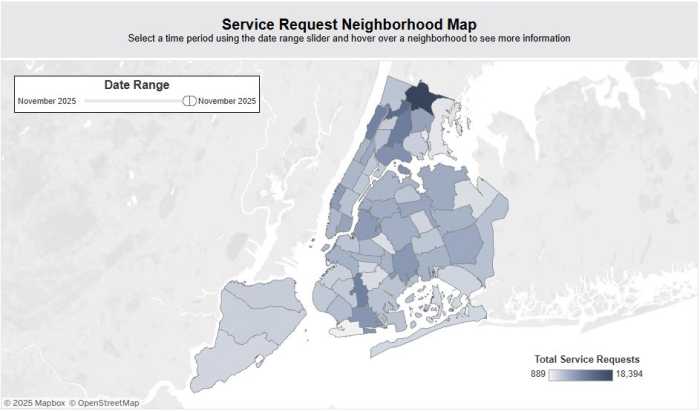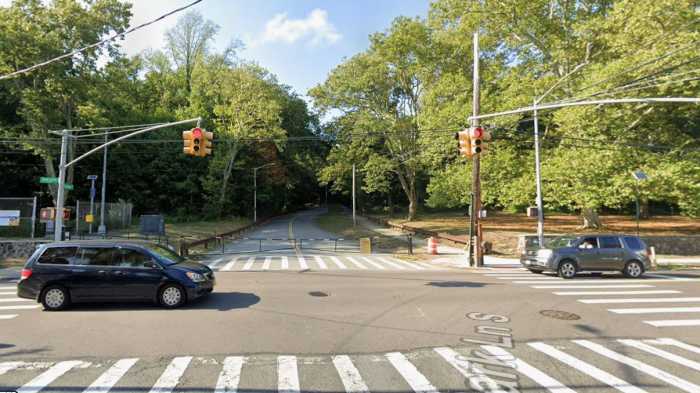Last week we looked at how our neighborhood’s earliest settlers found the water they needed to live. This week, we take a look at the Ridgewood Reservoir, the heart of Brooklyn’s first reliable water system, which also lent its name to the community that grew nearby.
The Ridgewood Reservoir was developed on 105 acres of farmland purchased from Isaac Snedeker located near Cypress Hills Cemetery, about a quarter-mile west of Fresh Pond Road (now Cypress Hills Street) and south of Cypress Avenue.
About 48 acres of the Snedeker Farm formed a natural basin and rose about 150 feet above sea level. In fact, the reservoir’s location is at one of the highest points on geographic Long Island, atop a moraine formed by Ice Age glaciers eons ago.
Location of the reservoir was important, as the gravity-fed system allowed water to flow naturally from the high reservoir down through the distribution system running below Brooklyn streets. At its peak, the reservoir would hold 150 million gallons of water, providing enough water to Brooklyn residents to last them at least 10 days.
A smaller, secondary reservoir holding about 20 million gallons was built in Flatbush Hills, about 175 feet above sea level.
The plan include constructing an iron pipeline 36 inches in diameter and five miles long connecting the Ridgewood Reservoir to the distribution system; the pipe generally ran along Cypress Avenue to Vermont Avenue, then proceeded further into Brooklyn.
A strip of land leading south from the main reservoir to Elderts Lane was acquired to install a 36-inch diameter, 3,400-foot-long iron-clad force tube pumping water into the reservoir from a long, covered aqueduct (or conduit) running along what eventually became Rockaway Boulevard.
Looking on a map of Brooklyn and Queens today, we see constant reminders of the Ridgewood Reservoir system, including Force Tube Avenue in Cypress Hills, Conduit Avenue through Brooklyn and Queens and Aqueduct Racetrack.
The covered aqueduct/conduit ran through south Queens and was connected to pumping stations developed near the spring-fed Baisley Pond, about six miles east of the reservoir. The aqueduct continued along what would later become Sunrise Highway into present-day Nassau County and connect to another water source for the reservoir: the Hempstead Lakes at present-day Hempstead Lake State Park.
The four ponds at Baisley and Hempstead were capable of producing 25 million gallons of water a day. The conduit would later terminate at a water source near the Suffolk County town of Wyandanch, which was then called “Ridgewood.”
Within two years of the project’s start, developer H.S. Wells and Company guaranteed, 10 million gallons of water would be delivered to Brooklyn per day; an additional 10 million gallons per day would be delivered within three years of the project’s beginning.
The water works, at full capacity, were capable of delivering 40 million gallons per day with all four steam engines and pumps installed at the main reservoir, and when the aqueduct system was expanded further east on Long Island to tap additional supplies of water.
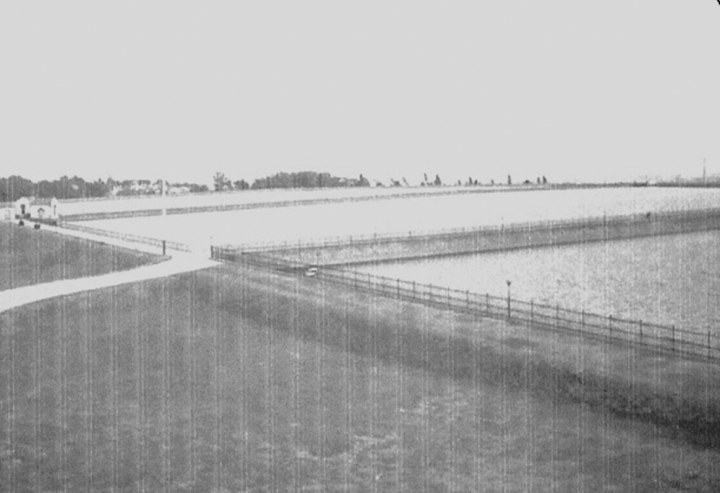
Breaking ground
The formal ground-breaking for the Ridgewood Reservoir took place on July 31, 1856. The Common Council of Brooklyn arranged for 30 horse-drawn stage coaches to leave Brooklyn City Hall downtown between 2:30 and 3 p.m. to journey to the reservoir site.
The ceremony was to start at about 4 p.m. A platform had been built and draped with American flags. Stewart’s Brass Band entertained the crowd with patriotic songs before the ceremony began.
Among the estimated 1,000 people in attendance was Jacob Denton, who owned a farm on the east side of Fresh Pond Road that later became part of Mount Carmel Cemetery, and his son, William.
Brooklyn Mayor George Hall was among the featured speakers; he would use a special shovel to turn the first dirt.
Renaming the area
The groundbreaking was featured on the front of the following day’s issue of The New York Times. They stated that from now on the site would be called “Ridge Wood” and not Cypress Hills. It did not state the authority for this name, but presumably the directors of the Nassau Water Company had so decided.
Prior to this date, none of the maps of the area show the name Ridgewood in use. However, subsequent to the groundbreaking, the maps show the site as the Ridgewood Reservoir.
The June 28, 1858, issue of the Long Island Democrat followed suit in one of its stories: “The 4th of July at Ridgewood, Long Island: This place formerly known as South Williamsburgh was lately christened Ridgewood. It is located on the Cypress Hills macadamized road about three miles from Peck Ferry Slip, near the Ridgewood Reservoir of the Brooklyn Water Works, and in the immediate vicinity of the Cemetery of the Evergreens.”
But today, the Ridgewood Reservoir is actually located in Glendale. Over the years, as Ridgewood and Glendale became developed, the Long Island Rail Road’s Bay Ridge branch became part of the boundary separating the neighborhoods.
Land north and west of the Bay Ridge line is in Ridgewood; and areas south and east of the line — including the reservoir — is considered Glendale.
Drinking ‘Ridgewoods’
Although H.S. Wells and Company had guaranteed to deliver 10 million gallons of water per day within two years, as it developed, they were substantially late, as work would not wrap up until 3 1/2 years after it started.
Finally, on April 28, 1859, the City of Brooklyn held a five-mile-long parade to celebrate the completion of the initial stage of the water works. To prevent any anticipated violence, 500 police officers were hired to supplement the Brooklyn Police Force, but as it happened, they were not needed.
The parade started at the corner of Myrtle and Bedford avenues and proceeded north along Bedford Avenue through Williamsburgh.
Major Gen. H.B. Duryea, who was head of the Fifth Brigade, led the parade. The Fifth Brigade was made up of the 13th, 14th, 17th and 72nd Regiments. New York Gov. Edwin Denison Morgan also participated, as did the common council of Brooklyn.
Because pure water meant that decent ice could be made, about 100 icemen marched in the parade, carrying their ice tongs.
When the first water from Ridgewood Reservoir flowed through the mains of the City of Brooklyn on April 28, 1859, the residents tasting the good water called their drinks “Ridgewoods.”
Although the celebration took place in April 1859, it was not until the following year, Jan. 20, 1860, that the water works became fully operational.
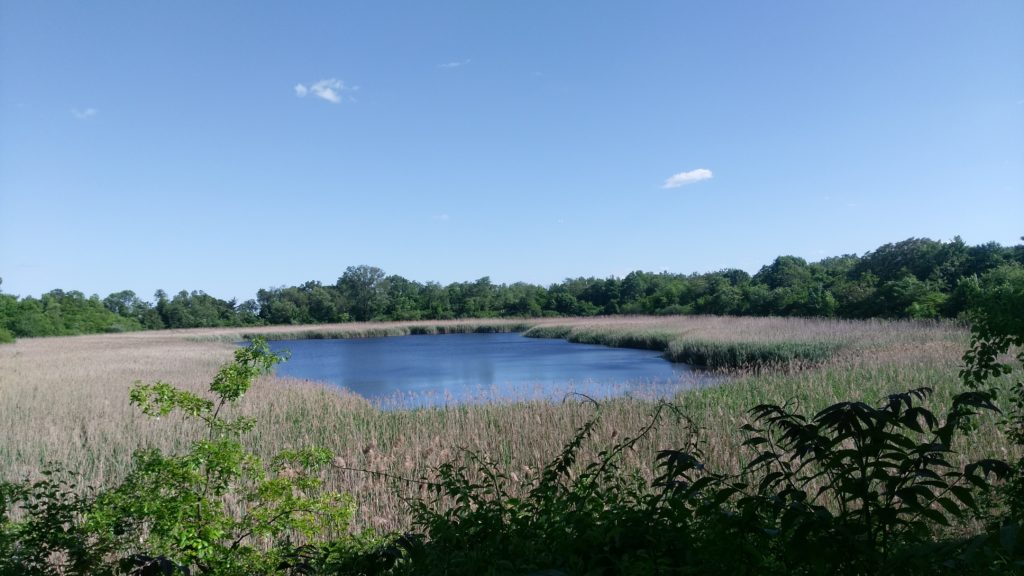
Recycling the reservoir
For nearly 100 years, the Ridgewood Reservoir provided Brooklyn residents with all the water they needed to drink, cook, clean and bathe. It would outlive the City of Brooklyn itself, which was incorporated into Greater New York City in 1898.
After New York City connected its water system — which supplies water from reservoirs upstate — to Brooklyn, the Ridgewood Reservoir became redundant. It was rendered a backup water supply in 1959, and taken completely out of the city’s water system 40 years later.
The basins were drained and the site was left dormant for 25 years, allowing the reservoir to naturally reforest itself. Eleven years ago, the city Department of Environmental Protection (DEP) transferred ownership of the reservoir to the Parks Department for future development as parkland. Incredibly, while the two outer basins were reforested, the center basin is home to a shallow, beautiful lake surrounded by natural reeds.
Several years later, then-Mayor Michael Bloomberg outlined a master plan which would have transformed the Ridgewood Reservoir and neighboring Highland Park into one of eight “regional parks” across the city.
Initial plans called for one of the three reservoir basins to be cleared and developed into new athletic fields and park space. As much as $50 million in city funds were initially allocated for this endeavor.
Residents, environmentalists and other civic activists fought the proposal, claiming that development plans would harm the reservoir’s fragile ecology created over the previous two decades. As reported by QNS and the Ridgewood Times, the reservoir is “home to more than 100 species of birds — including at least five that have been listed as Threatened or of Special Concern in New York state — several different species of plant and fauna and a wide variety of tree species.”
The Great Recession of 2007-09 caused financial distress in the city, forcing the $50 million reservoir revitalization plan to be tabled indefinitely. The Parks Department, however, received funds in recent years to renovate the perimeter pathways and a causeway between two of the three basins.

In just the last year, the state and federal governments have recognized the ecological importance and the historical significance of the Ridgewood Reservoir. The site was added to the National and State Registers of Historic Places, and the state Department of Environmental Conservation announced it would designate the reservoir as a wetland.
Writing to local Assemblywoman Catherine Nolan, DEC Commissioner Basil Seggos said that the wetlands within the reservoir are of “unusual local importance,” making them eligible to be added to DEC’s official wetlands map.
It would seem that the Ridgewood Reservoir truly has come full circle. The heart of a mechanical water system that once brought a taste of nature to a city now has come back to nature itself.
Source: The Jan. 22, 2015, issue of the Ridgewood Times.
* * *
Share your history with us by emailing editorial@ridgewoodtimes.com (subject: Our Neighborhood: The Way it Was) or write to The Old Timer, ℅ Ridgewood Times, 38-15 Bell Blvd., Bayside, NY 11361. Any mailed pictures will be carefully returned to you upon request.

